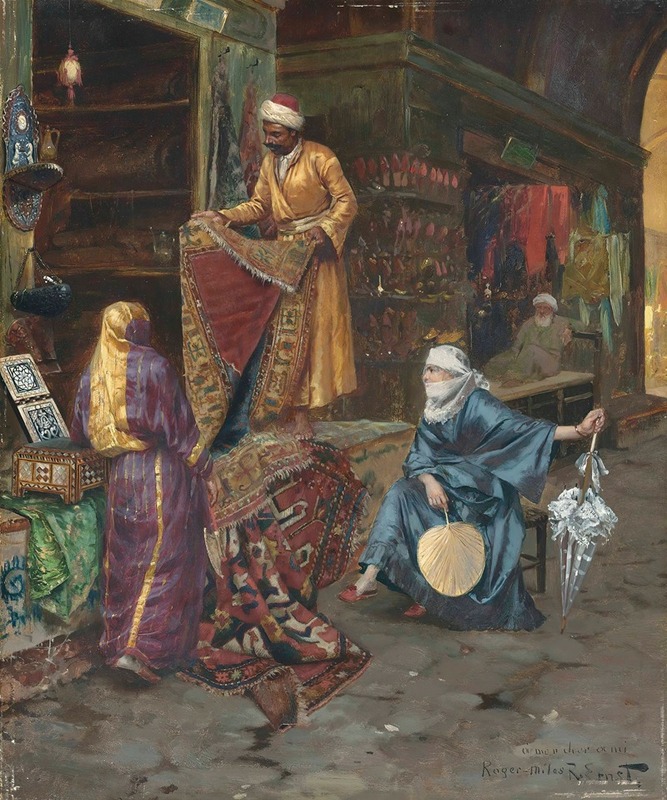
The Carpet Seller
A hand-painted replica of Rudolf Ernst’s masterpiece The Carpet Seller, meticulously crafted by professional artists to capture the true essence of the original. Each piece is created with museum-quality canvas and rare mineral pigments, carefully painted by experienced artists with delicate brushstrokes and rich, layered colors to perfectly recreate the texture of the original artwork. Unlike machine-printed reproductions, this hand-painted version brings the painting to life, infused with the artist’s emotions and skill in every stroke. Whether for personal collection or home decoration, it instantly elevates the artistic atmosphere of any space.
Rudolf Ernst was an Austrian painter known for his Orientalist works, which often depicted scenes inspired by the cultures and landscapes of the Middle East and North Africa. "The Carpet Seller" is one of his notable paintings, showcasing Ernst's fascination with the exotic and his meticulous attention to detail.
"The Carpet Seller" captures a vibrant and bustling scene, likely set in a Middle Eastern bazaar. The painting is characterized by its rich colors and intricate details, which are hallmarks of Ernst's style. In the scene, a carpet seller is surrounded by an array of beautifully crafted rugs, each with its own unique patterns and colors. The seller, dressed in traditional attire, is engaged in the act of selling or displaying his wares to potential buyers. This interaction is central to the painting, highlighting the cultural and economic exchanges typical of such marketplaces.
Ernst's work is often celebrated for its ability to transport viewers to distant lands, offering a glimpse into the daily lives and environments of people from different cultures. His attention to detail is evident in the textures of the carpets, the folds of the clothing, and the architectural elements that frame the scene. The use of light and shadow adds depth to the composition, enhancing the realism and inviting viewers to explore every corner of the painting.
The Orientalist movement, of which Ernst was a part, was popular in the 19th and early 20th centuries. Artists like Ernst were fascinated by the "Orient," a term used at the time to describe the regions of the Middle East, North Africa, and parts of Asia. This fascination was often fueled by the period's colonial interests and the Western world's desire to explore and understand different cultures. While Orientalist art has been critiqued for its romanticized and sometimes stereotypical portrayals, it remains an important part of art history, reflecting the complex interactions between Western artists and the cultures they depicted.
Ernst's paintings, including "The Carpet Seller," are appreciated for their artistic merit and the skill with which he rendered his subjects. His works are part of various private and public collections, where they continue to be studied and admired for their contribution to the Orientalist genre.
In summary, "The Carpet Seller" by Rudolf Ernst is a vivid representation of a Middle Eastern marketplace, showcasing the artist's skill in capturing the essence of a culture through detailed and colorful imagery. The painting stands as a testament to Ernst's ability to blend artistic technique with cultural storytelling, offering viewers a window into a world that fascinated many artists of his time.





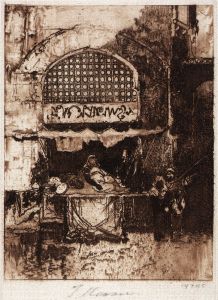
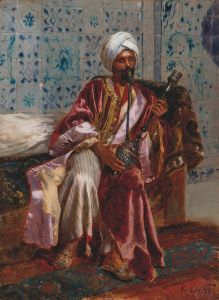

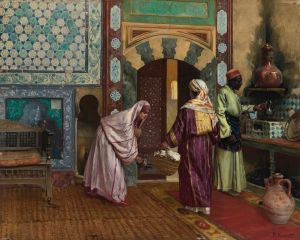
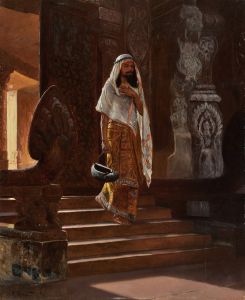
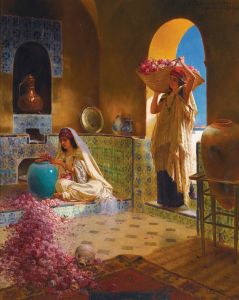
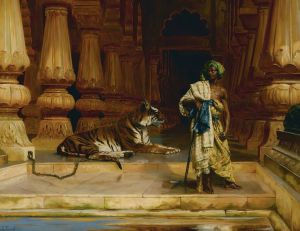
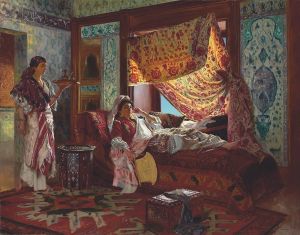


![Posters for Charity Bazar [i.e. Bazaar] for the widows and orphans of German, Austrian, Hungarian and their allied soldiers, March 23rd, 1916, New York, NY](/imgs/249259/s/winold-reiss-posters-for-charity-bazar-ie-bazaar-for-the-widows-and-orphans-of-german-austrian-hungarian-and-their-allied-soldiers-march-23rd-1916-new-york-ny-35f5cec1.jpg)

